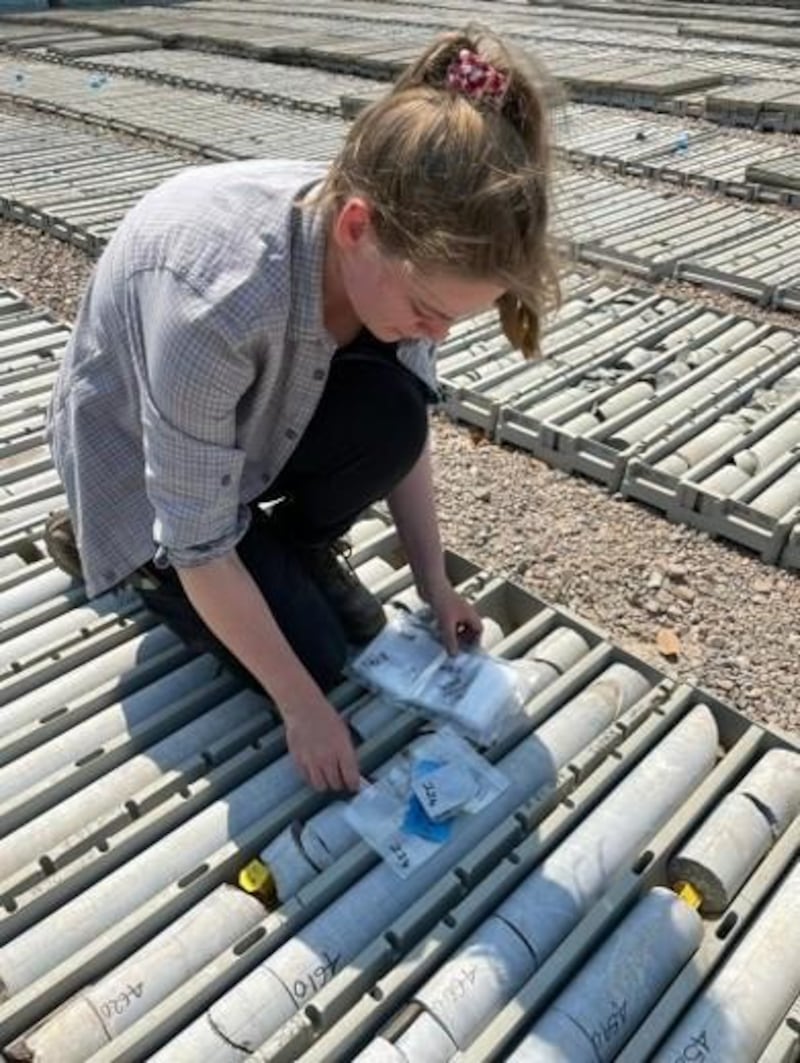Congratulations on winning the 2021 Science Foundation Ireland Image of the Year award. Tell us about the image.
It's a microscopic view of an ore taken from the Lisheen mine in Tipperary, which was mined for zinc and lead. This one is a colloform sphalerite, which is one of the major ore minerals for zinc. Ireland is rich in zinc, in fact we are one of biggest zinc producers in Europe.
How do such ores form?
Ireland has lots of limestone, which formed about 360 million years ago, and it has lots of fractures and faults in it. Broadly speaking, cool, very salty seawater-sourced water or brine flowed downwards through some of those fractures and faults and this often contained abundant sulphur.
Then you had hotter, hydrothermal fluid coming up through the fractures and faults from below, and these often carried metals, like zinc. When the fluids met and mixed, the host limestone rock dissolved and minerals formed with different textures. This zinc-rich colloform sphalerite has a pattern like a Celtic knot, and we got the image by taking a thin slice and looking at it with a microscope.
It looks beautiful – why are zinc and its minerals important?
We rely on zinc for making lots of green technologies, such as wind turbines and solar panels, and the sphalerite in Ireland has relatively few impurities so there is potential for it to be more sustainable to mine. I have just finished my PhD at iCRAG in UCD on how lead and zinc are mineralised in Ireland, and now I am applying what I have learned to another important metal, copper.
I recently spent a month in Zambia looking at ore deposits in a cobalt copper mine, examining 1.6 kilometre cores from the ground, looking at rocks that were formed around 550-900 million years ago to better understand the environmental conditions under which the minerals became so concentrated there.

Why is it important to understand the geology of minerals?
As we move towards a greener society, we will be relying more on minerals for technologies like electric vehicles, wind turbines and storing energy from renewable sources. When we need to mine for those raw materials, it's important that geologists are part of those conversations and plans, so we understand what the global supply is, whether it can be met and how to mine it sustainably.
How did you find doing the PhD?
I've finished up recently and I have yet to graduate, so I am still in the recovery phase of it all. I had great supervisors, Associate Professor Julian Menuge and Dr Steve Hollis, and I found my colleagues in iCRAG really supportive.
One of the aspects I found tough was the amount of time on the computer – when you think of geology you maybe think of travelling around and doing field trips, but my project was computer and lab based, and I worked a lot from home because of the pandemic. But now I have started working on the project in Zambia and it is great to be doing trips again.
And how do you take a break from work now?
During my PhD I unfortunately dropped a lot of my hobbies, so I am trying to get back into more balanced work habits now. I like to get out for a walk and I love reading. Realistically though I also watch a lot of TV, and I am particularly enjoying the nostalgia of box sets from the early 2000s.











